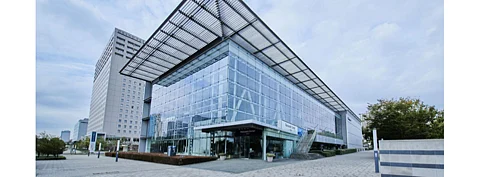

Japanese electronics and solar PV products manufacturer Panasonic Corporation is ceasing the production of solar PV products at its factories in Malaysia and Shimane Prefecture in Japan. In a regulatory filing, the company did not specify the reason for this decision. However, a day before Panasonic's official announcement, Nikkei Asia reported the company's expected move attributing it to 'fierce competition from Chinese rivals that can produce the items at a lower cost'.
As per the company's statement, Panasonic will withdraw from its in-house photovoltaic production for residential, public and industrial-usage during the course of fiscal year (FY) 2022 ending in March 2022. The Malaysian fab will stop wafer, cell and module production in fiscal 2022. Panasonic Solar Energy Malaysia Sdn. Bhd., established since December 2011, will be liquidated by way of transferring its assets.
It will continue to produce power-conditioners (inverters), storage batteries and other products at the Shimane facility in Japan but in FY 2022 it will end solar PV cell production at the site. Impacted employees will be transferred to the other components being manufactured here.
The Japanese manufacturer subcontract production to its manufacturing partners and continue to sell PV modules under the Panasonic brand in Japan. The move will also result into the group downsizing research and development (R&D) functions for PV technology at its Nishikinohama fab in Osaka, Japan. At Nishikinohama factory, it has been producing PV modules for a specific customer.
Globally, it will continue to sell outsourced solar PV modules as it has been doing in North America.
These steps, explained Panasonic, completes the structural reform of its PV business.
Recent developments
Panasonic has been struggling to maintain its PV production business for long now. Once the company was among the pioneers of solar PV technology production with highly efficient heterojunction (HJT) solar modules rolling out of its fabs, but it found itself looking for ways to make the business profitable through partnerships, with some of the high profile ones not working out.
A partnership between the company and US automobile and energy company Tesla for solar cell production didn't work out (see Tesla & Panasonic To Part Ways On Solar Cell Production). Another initiative to sell its Malaysian solar manufacturing business to GS Solar (China) and a R&D joint venture with the Chinese company for HJT cells and modules did not yield desired results either as Panasonic blamed its Chinese counterpart for not living up to the partnership agreement. It pulled out of the partnership to look for new collaborations (see Panasonic Pulls Out Of Partnership With GS-Solar). Back in August 2020, Panasonic said it was looking into every possible measure to restore profitability into the solar business by FY ending March 2023.
Nikkei Asia pointed out that with Panasonic's exit, now Kyocera and Sharp will remain the remaining major PV cell and panel producers in Japan; whereas Sharp has been producing its modules in China for many years. Globally, the PV module business is currently hogged by Chinese producers with PV InfoLink's 2020 global module shipment ranking of top 10 showing heavy Chinese dominance, representing 8 our of the top 10 (see LONGi Largest Solar Module Supplier In 2020). PV InfoLink's top 5 solar cell producers list for 2020 even has all companies from China (see Tongwei Leads PV InfoLink's 2020 Cell Shipment Ranking).
